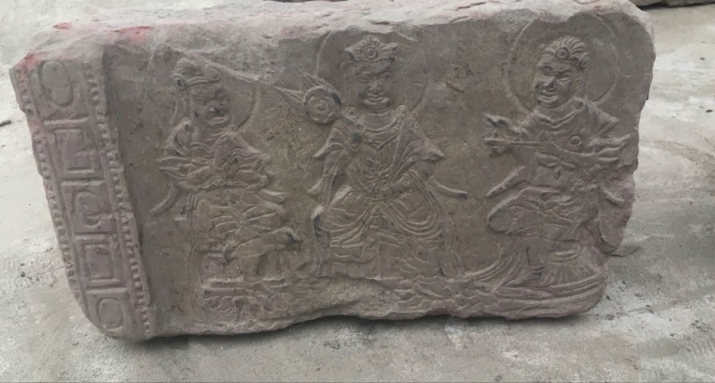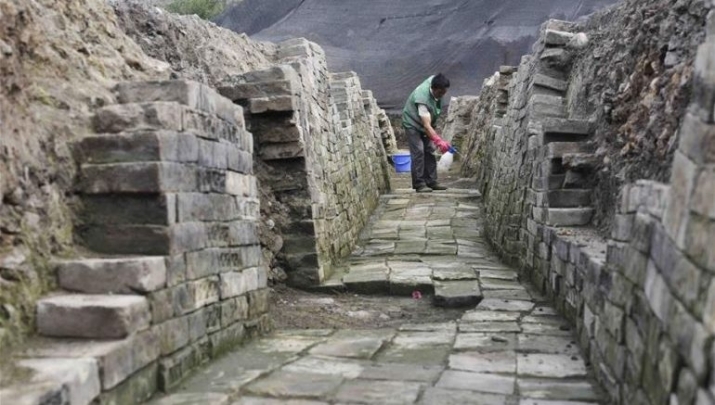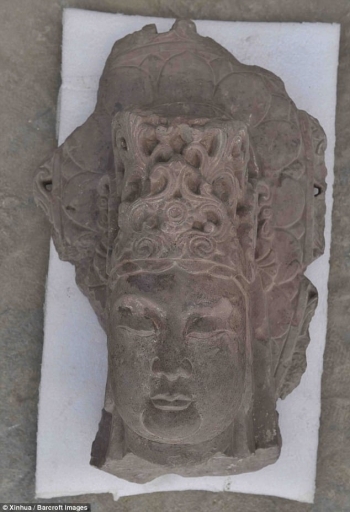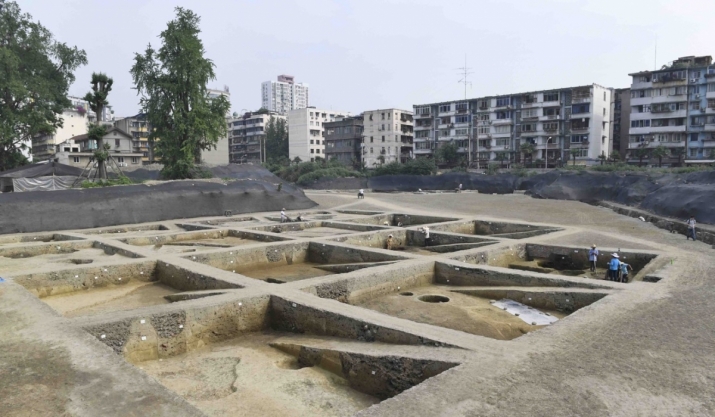The bureaucracy, moreover, was torn apart by factions proposing opposing measures regarding tax reform and land distribution. Echoing the perennial dilemma that arose in the Han Dynasty (206 BC–220 CE) and continued for most of imperial Chinese history, the court began eyeing the wealth and holdings of the temple, with the Confucian elite arguing that the temple property and finances should be confiscated for the good of the state (coincidentally, the Song also marked the rise and dominance of Neo-Confucianism at the highest levels of government). Eventually, the temple was unable to recover from the strife engulfing it and finally disappeared after a series of wars and lootings.
According to Wang Yi, director of the Chengdu Cultural Relic Research Institute, the discovery of temple could greatly contribute to the study of the spread of Buddhism in China from the Eastern Jin (317–589) to the Southern Song (1127–1279). He said that the site’s discovery provided invaluable information for further research into Buddhist culture during the Tang Dynasty. Archeologist and researcher Yi Li, who also led the excavation project, said that they had excavated about 11,000 square meters, which was only a part of the temple complex as it had stood during the Sui and Tang. “We have only excavated a part of the temple’s area, but already have a glimpse of its past glory.” (The Indian Express)
FEATURES|THEMES|History
Unearthing Fugan Temple: The Story of Chengdu’s Buddhist Heritage
 From thehistoryblog.com
From thehistoryblog.comIn the heart of the beautiful city of Chengdu is an archeological site that was once the illustrious Fugan Temple. The ruins of the once-grand complex serve as a microcosm reflecting southwestern China’s Buddhist past. Built in the 4th century and rediscovered after 1,000 years, Fugan Temple was one of the most prestigious places of worship and has been documented in various works of literature. Years of conflict and natural disasters wrought damage and destruction upon the temple, and all traces disappeared at some point during the Song Dynasty (960–1279).
Recently, however, Fugan has returned to the limelight thanks to the work of researchers from the Chengdu Cultural Relic Research Institute. On 4 June, the team discovered extensive foundations of this expansive historical site, including the ruins of surrounding buildings, wells, roads, and ditches, and many Buddhist scriptures.
Fugan means “to feel blessings” (福感)—a sentiment that was invoked by visitors upon encountering its heavenly appearance. It has held an important spot in Chinese religious folklore, with legends passing down from the Song about a monk named Daoxuan who publicly prayed for rain in front of the temple to end a persistent drought. When the rite finished the sky began to pour with heavy rain, which elevated the temple’s prominence and perceived supernatural power in the eyes of Buddhists. Several centuries earlier, the famous Tang Dynasty (618–907) poet Liu Yuxi (772–842) left a poem to commemorate the temple’s renovation, indicating the temple’s early fame.
Although the temple often enjoyed periods of prestige, it also suffered great damage during the Tang and Song dynasties, especially when the Song emperors began to experience economic difficulties. Population growth outstripped economic growth, while military expenses associated with northern border wars and the cost of an ever-burgeoning government bureaucracy bankrupted the imperial treasury.
 From realmofhistory.com
From realmofhistory.com An unearthed carving of a bodhisattva head. From xinhuanet.com
An unearthed carving of a bodhisattva head. From xinhuanet.comLi said that the team had found more than 1,000 clay tablets inscribed with Buddhist scriptures and more than 500 stone carvings of the Buddha and various bodhisattvas, alongside glazed tiles. They also found some 80 ancient tombs scattered near the temple, dating back to Shang and Zhou dynasties (1600–256 BC). Around the temple were scattered large amounts of household tools and utensils, as well as building materials dating back to various periods between the Song to Ming dynasties. Li said that these important findings would give archaeologists a good picture of the temple’s past glory and long history.
 From thehistoryblog.com
From thehistoryblog.comThe history of Chengdu can be traced back 2,400 years ago when it was settled by denizens from Qin, the upstart meritocratic state that would unify China for the first time. For thousands of years, the city has kept its original name and position as a significant center for the Chinese economy, cultural vibrancy, and political influence. The city was also famous for its bronze culture, an indispensable part of ancient Chinese culture, originated at the place where the Southern Silk Road started, and the place where the earliest paper currency was first printed. It is listed among the first 24 state-approved historical and cultural cities and owns 23 state and provincial cultural relic units.
Apart from Fugan Temple, Chengdu has several other remarkable Buddhist sites, including Daci Monastery, Wenshu Monastery, and Baoguang Monastery. Daci Monastery, also known as the “Unequalled Monastery,” was built during the Northern Wei (386–534) and the Jin dynasties (265–420), reaching its cultural zenith during the Tang and Song dynasties. Xuanzang (fl. c. 602–64) was initiated into monkhood and studied for several years at Daci Monastery. Wenshu Monastery is reputed to be the best-preserved temple in Chengdu. It was built during the Tang Dynasty, and parts of Xuanzang’s skull are held there as relics. Baoguang Monastery also has a long history and a rich collection of relics. It was constructed sometime during the Eastern Han (25–220) and has appeared in written records since the Tang. It was destroyed during the Ming Dynasty (1368–1644) and rebuilt during the Qing (1644–1912).
Chengdu has long been an economic and cultural center in western China, and today it is a bustling metropolis. The discovery of Fugan as well as other buried temples could greatly contribute to the study of the eastward spread of Buddhism from China’s western regions. The evidence and antiquities gathered so far suggests that Fugan Temple was a player in significant chapters throughout the story of Chinese Buddhism, and will help historians understand more about the material culture of Chengdu.
See more
Legendary Buddhist temple, lost for more than seven centuries, yields its treasures beneath Chinese city (South China Morning Post)
Lost temple discovered after 1,000 years in China (The Indian Express)
Ancient Chinese temple is uncovered after almost 1,000 years (Mail Online)
Long-Lost Legendary Buddhist Temple Found Under Chinese City (Mysterious Universe)
Buried for Almost a Millennium, Archaeologists Recover Over 1,500 Religious Artifacts at Lost Chinese Temple (Ancient Origins)
Chengdu (Wikipedia)
Related news from Buddhistdoor Global
Archaeologists in China Recover Over 1,500 Buddhist Artifacts from Temple Lost 1,000 Years Ago














